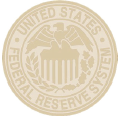Economy

Fed Beige Book: Variant Surge, Labor Shortages Stymie Growth
Written by David Schollaert
March 4, 2022
The U.S. economy has expanded at a modest pace since mid-January, the Federal Reserve said in its latest Beige Book report. Overall growth was constrained by a surge in Omicron, forcing firms to deal with heightened absenteeism and continued supply-chain bottlenecks.
Consumer spending was weaker, with auto sales largely mixed and manufacturing activity expanding at a modest pace. Supply-chain struggles and low inventories continued to restrain growth, particularly in the construction sector, the Fed districts reported.
While demand for residential real estate was generally strong, many districts reported no change in home sales due to seasonal trends and low inventories. The energy sector saw modest growth. And despite increased uncertainty, the medium-term economic outlook remained stable and generally optimistic.
Employment growth ranged from modest to moderate across Fed districts. Strong labor demand was hampered by widespread worker scarcity, with firms noting difficulty maintaining staffing levels due to high turnover. This challenge was exacerbated by COVID-19 disruptions in January. Increased compensation packages and workplace flexibility were added to attract workers, with mixed success.
Elevated prices remained a concern across districts. Prices rose at a robust pace, with some reporting an acceleration in input costs across a broad swath of industries, with elevated transport costs particularly significant. Higher prices were fueled by rising labor costs and ongoing material shortages.
District Highlights from the March 2022 Beige Book:
Boston – Business activity expanded at a slight to modest pace. Labor demand remained very strong, but employment appeared roughly stable. Upward wage pressures remained substantial, but eased for some positions. Prices increased moderately. Contacts were optimistic for spring, but noted downside risks tied to inflation and supply-chain disruptions.
New York – Growth stalled in the latest reporting period, constrained by ongoing supply disruptions, worker shortages, and the Omicron outbreak. Moreover, unusually high absenteeism made it difficult for firms to maintain adequate staff. Businesses continued to report substantial increases in selling prices, input prices and wages. Despite these challenges, contacts remained optimistic about the near-term outlook.
Philadelphia – Business activity continued to grow modestly during the current Beige Book period, and some sectors remained below pre-pandemic levels. The surge in COVID-19 cases from the Omicron variant caused significant business disruptions before easing. The labor market remained tight with modest growth, while wages and prices grew sharply. However, there were signs that wage and price increases may be plateauing.
Cleveland – The District economy grew at a more modest pace as the Omicron wave temporarily dampened activity in high-contact services. Employment rose moderately. Labor shortages and supply-chain challenges resulted in widespread increases in wages, nonlabor costs and selling prices. Firms expected a solid year for sales, but they were concerned that labor scarcity and supply-chain difficulties would persist.
Richmond – The regional economy has grown moderately since the previous report. Firms across a variety of sectors reported modest to strong growth in demand, but many struggled to meet that demand due to shortages of labor and persistent supply-chain issues. In many cases, higher costs to businesses were passed through to customers, leading to a continued elevated rate of price growth.
Atlanta – Economic activity expanded moderately. Labor markets remained tight and wage pressures grew. Nonlabor costs rose. Retail sales were strong. Leisure travel softened somewhat. Housing demand was robust. Commercial real estate conditions were mixed. Manufacturing activity was robust. Banking conditions were stable.
Chicago – Economic activity increased moderately. Employment increased strongly; consumer spending, business spending, and manufacturing grew modestly; and construction and real estate activity was up slightly. Wages and prices rose rapidly, while financial conditions deteriorated some. Expectations for 2022 agriculture income moved up.
St. Louis – Economic conditions have remained unchanged since the previous report. Employers reported robust wage increases and continued difficulties finding workers. Firms reported improved ability to pass on price increases and anticipate continued increases. The Omicron variant contributed to decreased activity in the transportation and hospitality sectors.
Minneapolis – The region’s economy grew moderately over the first weeks of the year. Price pressures remained strong. Though employment increased overall, many firms reported decreased staffing levels due to higher turnover and recruitment difficulty. Contacts generally felt that wage acceleration was driven by tight labor markets rather than inflation expectations. New entrepreneurs reported quitting their outside jobs or cutting hours.
Kansas City – The Tenth District economy expanded at a modest pace in the first two months of the year. The temporary surge in COVID-19 cases slowed spending and hours worked in the leisure and hospitality sector, but activity rebounded quickly and grew steadily across other services and manufacturing sectors. Prices grew at a robust rate, and nearly all contacts reported they expect cost pressures to persist throughout the year.
Dallas – Expansion in the District economy moderated, with the COVID-19 surge exacerbating labor and supply-chain shortages and disrupting demand in certain sectors. Employment rose fairly robustly, and wage growth pushed to new highs. Supply chain issues continued to drive up costs, and prices rose at a rapid clip. Outlooks remained positive, though uncertainty spiked.
San Francisco – Economic activity strengthened moderately over the reporting period. Employment grew further while overall conditions in the labor market remained tight. Wages and price levels climbed notably. Retail sales increased strongly, while conditions in the consumer and business services sectors picked up following the peak of the Omicron wave. Lending activity was steady.
By David Schollaert, David@SteelMarketUpdate.com

David Schollaert
Read more from David SchollaertLatest in Economy

Steel groups welcome passage of budget bill
Steel trade groups praised the passage of the Big Beautiful Bill (BBB) in Congress on Thursday.

Industry groups praise Senate for passing tax and budget bill
The Steel Manufacturers Association and the American Iron and Steel Institute applauded the tax provisions included in the Senate's tax and budget reconciliation bill.

Chicago PMI dips 0.1 points in June
The Chicago Purchasing Managers Index (PMI) slipped 0.1 points to 40.4 points, in June.

Multi-family pullback drives housing starts to 5-year low in May
US housing starts tumbled in May to a five-year low, according to figures recently released by the US Census Bureau.

Architecture firms still struggling, ABI data shows
Architecture firms reported a modest improvement in billings through May, yet business conditions remained soft, according to the latest Architecture Billings Index (ABI) release from the American Institute of Architects (AIA) and Deltek.

